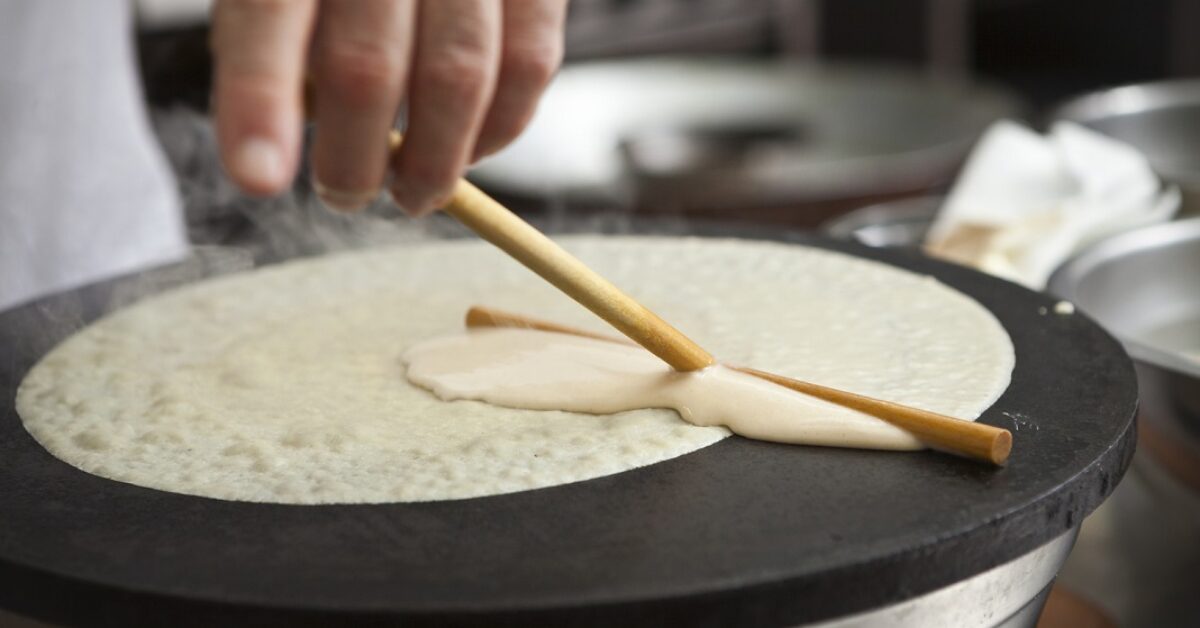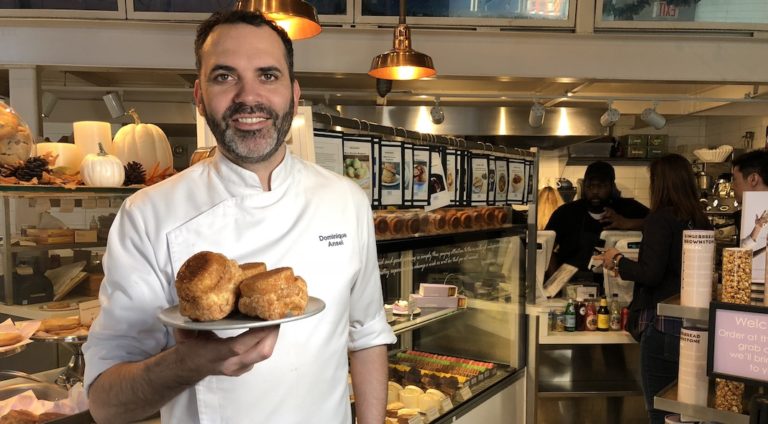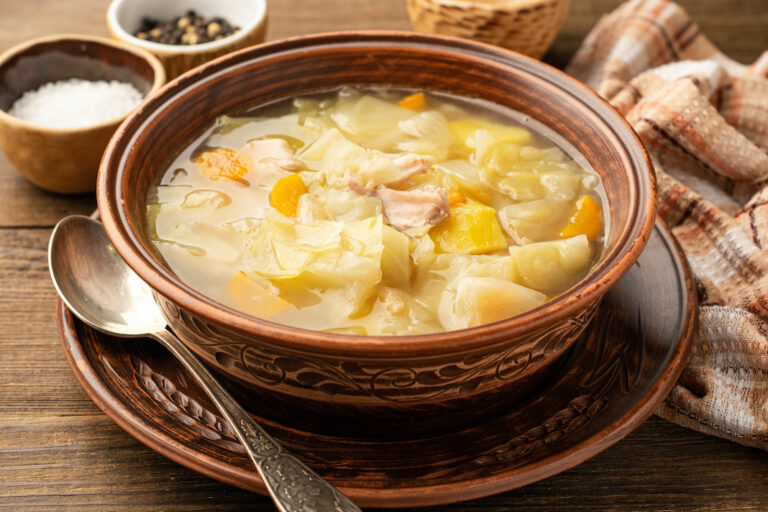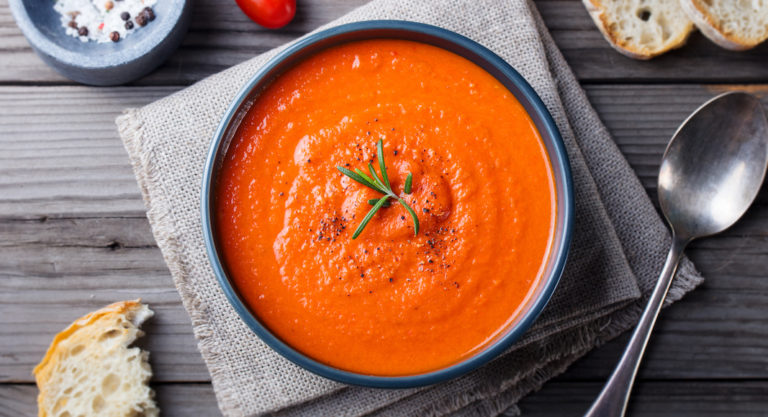Sunday, February 2 is not only the day of the Super Bowl, it’s also Chandeleur, the holiday for eating crêpes. While some will go to the best crêpe shops in their town to celebrate Chandeleur, others will be busy making crêpes at home. We asked French chefs based in the United States for their secrets to making a good homemade crêpe.
Gilles Renusson, an instructor at the Secchia Institute for Culinary Education in Grand Rapids, Michigan, recalls the recipe by heart. “Fifty years ago, I entered a hotel as an apprentice and had to learn about 50 recipes by heart, including the crêpe batter recipe,” he says. Immediately, the chef recites the recipe he knows off the top of his head. “You need a liter of milk, 400 grams of flour, seven eggs, 50 grams of butter and sugar, and half a teaspoon of salt”.
He reminds us that “the frying pan must not be too hot, that’s essential for proper cooking.” His little secret to adding butter to the mixture? “You should brown it a little, then immediately add it to the dough and stir well, and then put the dough in the fridge the day before cooking.” The French chef specifies that you can add “Grand Marinier or cognac” for extra flavor.
For Romain Cornu, pastry chef for the Hakkasan Group in Las Vegas, “the most important thing is the butter. I use Irish salted butter, it’s the top butter in the United States. It gives it more flavor.” Another technique, which makes the dough lighter, “is to beat the whites before adding them to the rest of the dough.” And for all his pastries, Cornu confides that he only uses “Fleur de sel,” a type of sea salt collection from the north Atlantic coast of France. And for milk, “organic milk, which has more fat, is also the best.”
While for Jean-Claude Perennou, pastry chef at Cannelle LIC in New York, “the most important thing is the flour, I use Clean Arthur which is a good quality.” This Breton native reminds us that “what should not be forgotten is to let the dough rest for at least four hours, it makes it less elastic” so that the starch in the flour can swell. And, according to him, once the crêpe is cooked “the winning combo for sweet crêpes is banana, Nutella, and a scoop of ice cream.”
The problem we often encounter is the lumps that form in the dough. Yannick Dumonceau, a native of Lyon and pastry chef at ONE65 San Francisco, shares his secret trick: “you have to use warm milk to avoid lumps.” His signature move: a drop of rum or orange blossom to give a unique taste to the crêpes.
Elodie Pouliquen-Darmon, from La Chouquette in Los Angeles, confides that “my secret is a blond beer.” The Parisian, of Breton origin, moved to Los Angeles three years ago to open the pastry shop, La Chouquette. “The most important thing for me is the butter. I use the Breton butter from Trader Joe’s,” she shares. For eating crêpes, she likes to keep it simple: “I put sugar and lemon juice, it’s delicious!”
Flipping the crêpe during the cooking process isn’t just done to impress friends. “If you hold a coin in your left hand and flip the crêpe with your right hand, it will bring prosperity,” says Renusson.






